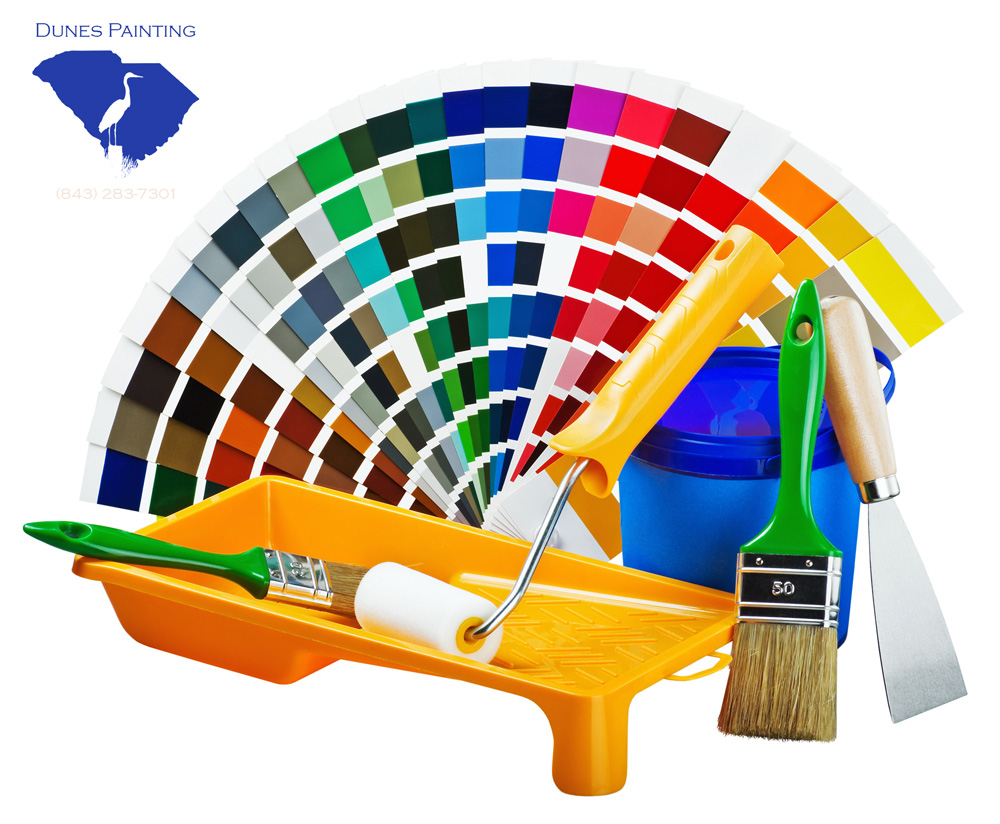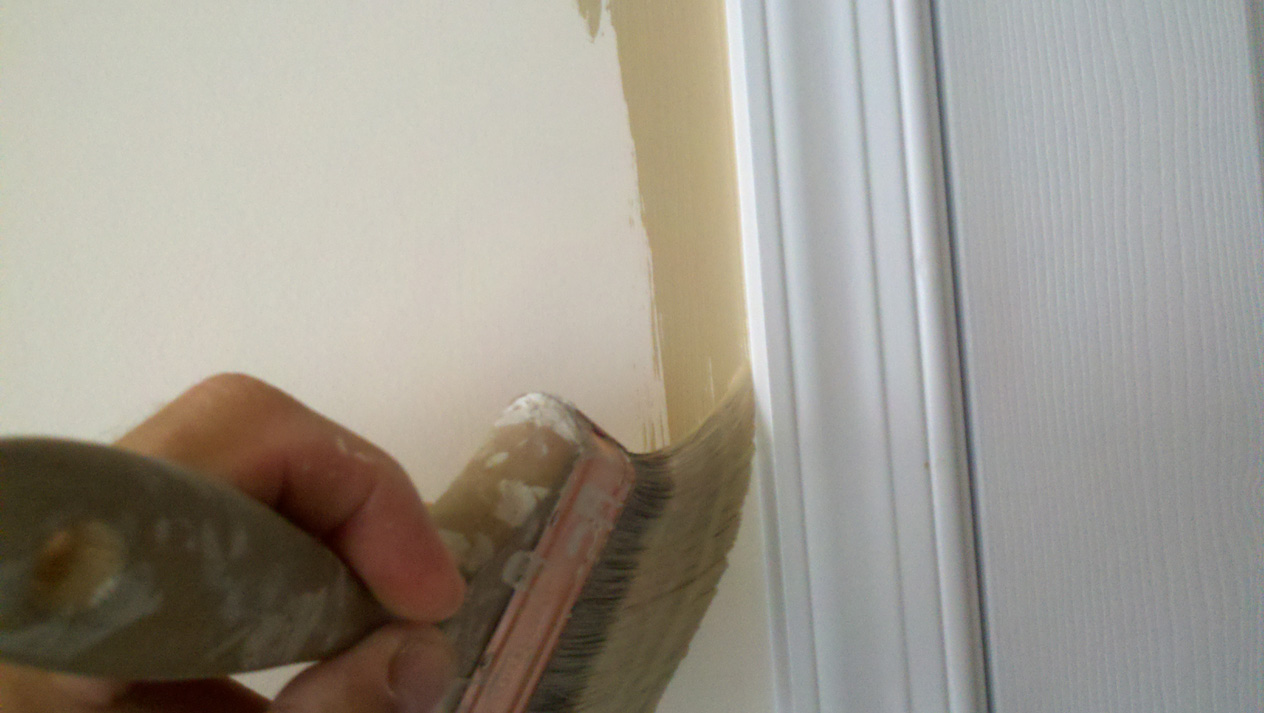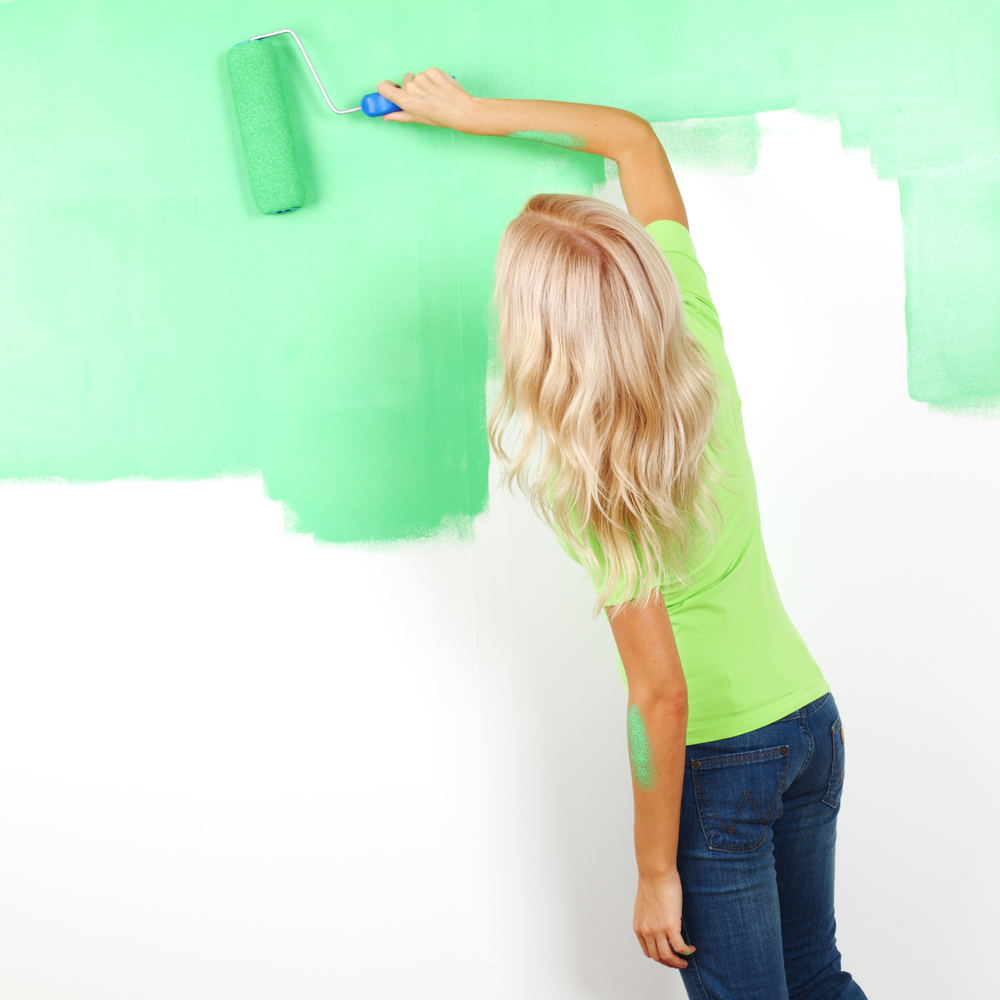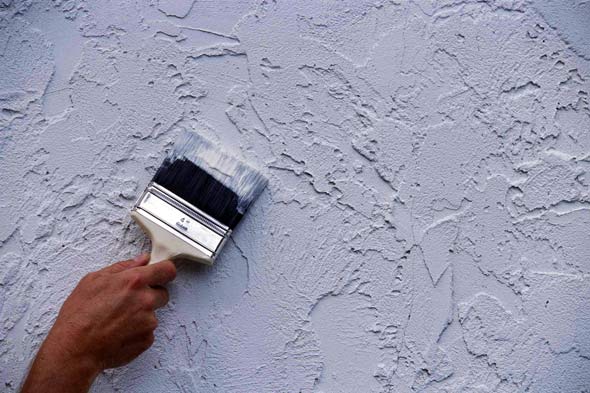This week we started applying the Kem Kromik metal primer to the walkways and stairs at the La Mirage hotel. Last week we used Ospho to treat all the rusted metal (and there was a lot!).
Continue readingOspho Rust Treatment at the La Mirage
This week we’ve started a project at the La Mirage condo complex on the south end of Ocean Boulevard. We were contracted to prime and paint the metal walkways and railings. Prior to priming we treated the rust (lots of rust!) on the steel.
Continue readingHow To Repair Holes In Drywall
When you have lived in a house for a considerable period of time and/or move into one which had been occupied previously, there are bound to be repairs to crop up at some point or another.
Continue readingMore Exterior Painting Pics From Walk2Campus At CCU
[vc_row][vc_column][vc_column_text]House #4 of 9 has Sherwin-Williams “Great Green” (SW6430) on the siding, and “Leisure Blue” (SW6515) on the shutters.
House #5 has “Starry Night” (SW6540) on the siding, and “Majestic Purple” (SW6545) on the shutters.
Yesterday we finished house #6 of 9 for Walk2Campus at Coastal Carolina University in 100 degree temperatures!
The siding is Sherwin-Williams “Bora Bora Shore” (SW9045) and the Shutters are “Coral Island” SW6332.
We are using SW Emerald line on both the siding and shutters.
[/vc_column_text][/vc_column][/vc_row][vc_row][vc_column][mk_gallery title=”Exterior Painting at Coastal Carolina University in Conway, SC” images=”561,562,563,564,565,566,567,568,569″ image_size=”full”][/vc_column][/vc_row]
3 Down, 6 To Go On Rainbow Row!
Walk2Campus @ Coastal Carolina University
Starting the exterior of 9 student houses for Walk2Campus at Coastal Carolina University! Going to be a “Rainbow Row, Charleston” look…stay tuned for before and after pics!
How To Paint Walls With A Roller
[vc_row][vc_column][vc_column_text]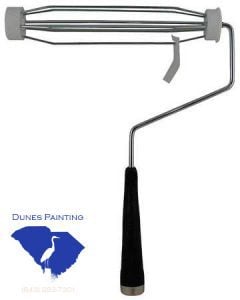
Yet, even the finest technique will not operate with poor-quality gear. Do not squander your cash on those all in one throwaway roller set ups when you can purchase a professional set up that will last a life for under $20. Focus on a roller framework that is good. To expand your reach and give better control to you, twist a 48-in. You could use a broom that is threaded handle. While paint trays are used by most homeowners, you will seldom see a professional using one. That is because a 5-gallon pail with an unique pail display hung over the border functions a lot better.
Here are several advantages of a bucket and screen over a roller pan:
- It is not difficult to transfer the bucket without spilling
- The bucket holds more paint. You will not have to often refill a pan.
- It is simpler and faster to load the roller cover from a bucket with paint.
Use a classic drywall compound bucket or purchase a new bucket that is clean. Add bucket screen and you’re prepared to go.
The most significant part of your paint rolling set up is the roller cover, also called a sleeve. Once you experience the difference a great roller cover makes but you will not mind the few additional minutes of clean-up time. Affordable roller covers do not hold enough paint to do a great job.
Rather, purchase a 1/2-in. nap wool give it a try and mix roller cover. With appropriate attention, this may function as last roller cover you purchase.
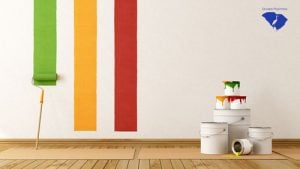
Keeping a wet border is critical to all top quality paint jobs, whether you’re varnishing furniture, enameling a door or rolling paint. The notion would be to plan the sequence of work and work quickly enough so that you are constantly lapping just paint that is applied onto paint that is still not dry. If next section has dried you stop for a rest at the center of a wall, by way of example, and after that begin painting, you will probably see a lap mark where both regions join. The rolling technique we reveal prevents this difficulty by allowing one to rapidly cover a big region with paint after which return to smooth it out—which brings us to the second painting technique that is significant.
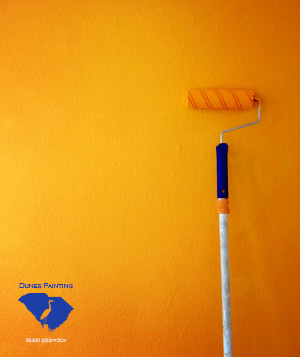
This “cutting in procedure that is ” makes brush marks that will not fit the roller feel on the remainder of the wall. For the occupation that is finest appearing, you will need to cover with the roller as many brush marks as potential. Do that by carefully rolling up close to the ceiling, moldings and interior corners. With training, you’ll can prevent crawling up on a ladder to paint like we reveal previously, and have the ability to get in a inch of the ceiling rolling vertically.
Pick the balls before they dry out. It is unavoidable that you will get an occasional ball in your paint. Drying touches of paint in the border of the pail or pail screen also can cause this issue. Cover with a moist cloth when you are not using it. Take it outside if partly dry paint is sloughing off the display and clean it. As you go keep a wet rag and pick balls off the wall. Form used paint through a net paint strainer to remove balls. Five gallon size strainers are offered at paint shops for about $1.
Before you wash it scrape excess paint in the roller. Use your putty knife, or better yet, a roller that is unique – scraping on tool. Rinse until the water runs clear the roller cover. A paint and roller brush tool that is whirling, offered at paint and hardware shops for about $8, simplifies the cleaning job. Simply ease the roller cover wet and repeatedly onto the spinner and spin out the roller until it is clean.
Essential Tools For This Job
Have the required tools for this particular DIY job before you begin—you’ll conserve frustration and time.
- Bucket
- Paint roller
- Paint scraper
- Painters tape
- Putty knife
- Roller screen
- Roller sleeve
- Paintbrush
Essential Materials For The Job
Prevent last minute shopping excursions by having all your stuff prepared ahead of time. Here is a list.
- Paint
- Primer
[/vc_column_text][/vc_column][/vc_row]
How To Cut-In Walls
Cutting-in, occasionally called trimming in, is a procedure for painting alongside trim, mouldings or adjoining surfaces normally in preparation of using a roller to fill in the big regions of wall surface with a brush.
Continue readingHow to Paint Walls Without Streaks
On the list of life’s frustrations is spending your weekend painting a room, only to discover it looks as if your five year old tried her hand at the job. Swishy brush strokes or streaks mar a finished paint treatment, ruining the visual aesthetic you desire. When planning to put your home on the market or to simply improve a room’s ambiance, there are a few tips of the painting trade that allow for a more professional finish, even when you’re the nonprofessional at the other end of the brush.
- Choose a matte- or flat-finish paint for your walls. Higher gloss finishes, such as satin or semi-gloss, dry with a sheen, which highlights painting strokes that aren’t fully blended. Additionally, consider investing in the highest quality paint you can afford as some inexpensive paints are prone to drying in a streaky finish because of their ingredients. Unmixed or cheap paint and tools might save you dollars at the store, but you’ll lose those savings in frustration and headaches when the job isn’t finished to your satisfaction and must be redone.
- Repair any holes or gouges by filling the holes with spackling putty. A small amount placed on the tip of a putty knife will fill most nail holes or gouges. Once the hole is filled, use the flat edge of the putty knife to scrape away excess putty so it dries flush with the wall. Any dried bumps or smears will make paint appear more pronounced.
- Affix painter’s tape along baseboards or crown moldings and around windows or door frames to protect surfaces that should not be painted. Painter’s tape is formulated so it does not pull existing paint or finish from the wall when it is removed and it prevents unwanted drips or spills from marring other surfaces.
- Open the paint can with the opener supplied by the paint store. If you need to replace the lid to protect unused paint for another day, the lid should close tightly to keep air and organisms out so it will match any previously applied paint. The right opener won’t bend the lid and prevent it from sealing properly.
- Stir the paint for about 60 seconds with the stir stick. Although your paint was mixed at the store, some of the blended pigments might have separated, which causes streaks in the finished look.
- Cut in all the wall borders at the ceiling, floor and corners with an angled brush. Hold your hand steady and pull the brush along the wall so it fans with the upper tip of the angle creating a straight edge.
- Rinse the paint from your brush when the wall borders are painted and hang the brush to dry from a peg or hook so excess water will drip from the brush.
- Roll the roller cover in the paint pan until it is saturated. Roll out the excess paint on the raised portion of the pan until the cover doesn’t drip when it is lifted. The cover, though, must remain evenly saturated on all sides so no uneven strokes are left behind.
- Apply the paint by rolling a 3-foot-high “M” or “W” shape — no other alphabet characters provide quite the structure required — and fill in the empty spaces of the letter until a 3-foot-square is created. Position the roller so the closed end is moving in the direction you are painting and so you don’t press the roller too hard or too lightly along the wall, creating streaks. An even hand repeats this pattern until the wall is one solid swath of color.
- Allow the paint to dry overnight before rolling on a second coat of paint. Two coats should always be your mantra as one coat is rarely enough to complete the look and is often the culprit for a streaky finish. Additionally, if you’ve chosen a particularly bold color, three coats or more might be required.
Things You Will Need
- Matte or flat paint
- Spackling putty
- Putty knife
- Painter’s tape
- Paint can opener
- Paint stir stick
- Angled paint brush
- 3/8-inch nap roller cover
- Roller frame
- Paint pan
Tip
- Stir the paint every 20 to 30 minutes to blend any floating pigments that have settled since the previous stir.
- Paint on sunny days so you can examine your handiwork as you paint, minimizing any uneven strokes which will appear as streaks.
- Try to time your painting jobs so you are painting when it’s not too hot outside. Hot air dries paint quickly, showing more roller and brush marks.
- Rinse the roller cover thoroughly and allow it to dry before painting the next day.
Tips For Repainting Stucco
Q: The stucco on my home’s exterior looks faded. What can I do to make it look new again?
A: Stucco, like many surfaces, can fade – especially when it’s exposed to direct sunlight. But, making it look new again is easy. Quality paint can revive the look of your stucco, giving your home a fresh, new appearance.
Q: What if I want to completely change the color of my stucco?
A: No problem. Just like any surface (for example, wood siding), stucco can be repainted to suit your color preferences. If you want to achieve a darker shade than your original stucco color, and the surface is in good shape, quality paint can probably provide the coverage you need in one coat. Painting a lighter shade over a darker tone may require two coats. When selecting a new color, don’t forget to coordinate with other exterior colors on your home such as shingles and trim.
Q: There are so many exterior paint products on the market. How do I know which one will be the best for stucco?
A: Most exterior paint products are formulated for application on a variety of surfaces, from wood siding to brick and stucco. The knowledgeable sales people at Sherwin-Williams can tell you about products like Duration® Exterior Coating, and SuperPaint® Exterior Latex Paint. Just tell them a little about your home’s exterior and your goals, and they’ll help you select the coating that will best suit your needs.
Q: Which are better, latex- or alkyd-based products?
A: Acrylic latex products perform the best on stucco. Most do-it-yourselfers find that latex products are easiest to use because they are easy to apply and they clean up with soap and water Acrylic latex paints also offer good gloss and color retention as well as good coverage that dries fast.
Q: Do I need a primer?
A: If the surface of your stucco is in good shape with no exposed substrate, possibly not. However, if you need to make a lot of repairs, using a primer will make your finish coat look great and provide the beautiful, long-lasting results you expect. Ask the experts at Sherwin-Williams to help you pick the right product for the job.
Q: What else do I need to do to get started?
A: Once you’ve selected your coating, make sure you have the products you need to make minor repairs or fix cracks. Sherwin-Williams’ ConSeal Elastomeric Sealant or ConSeal Smooth & Textured Elastomeric Patches are excellent for repairing hairline cracks in stucco. The elastomeric properties of the coating keep it flexible to minimize the chance that cracks will reappear. After you’ve made your repairs, make sure the surface is clean and dry before you prime or paint.

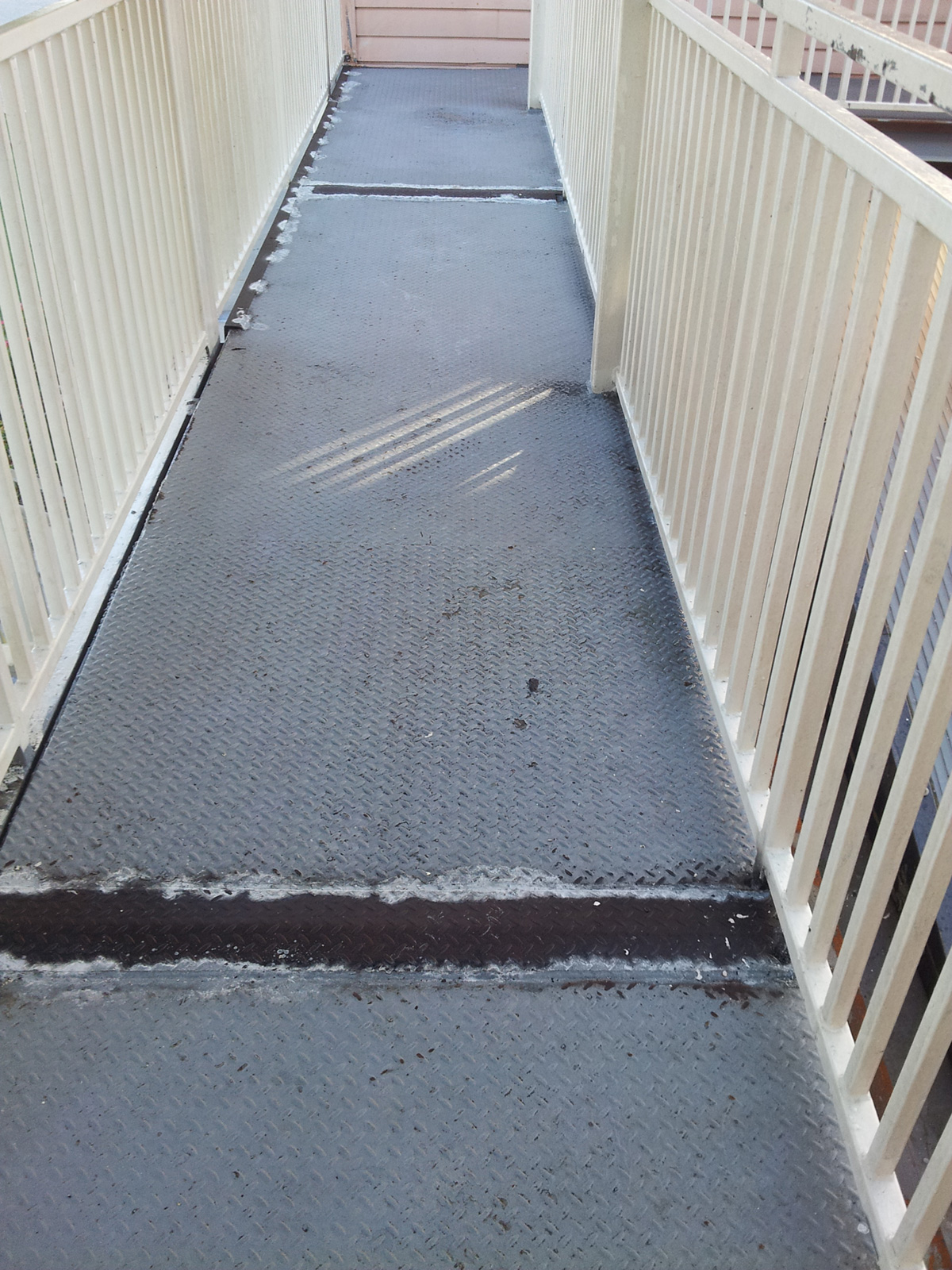
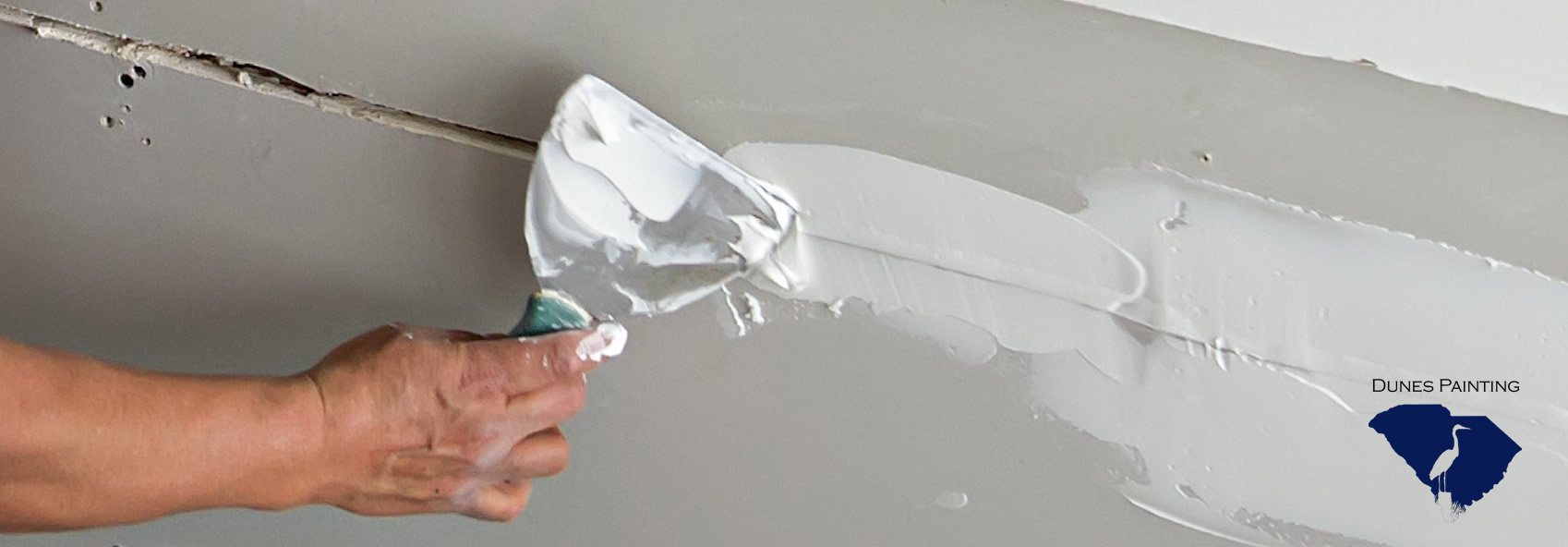


![20160621_120444[1]](https://dunespainting.com/wp-content/uploads/2016/06/20160621_1204441-300x225.jpg)
